Exactly a month before the Battle of Lexington and Concord, 23 soldiers from the British army’s 26th Regiment of Foot – many of them old or “worn out” – and their families are stationed at a dilapidated fort 130 miles south of Montreal. Less than two months from now the fort and its valuable artillery pieces will be captured by colonials preparing to drive British forces out of Boston. For now however, the fort’s occupants are unaware of political unrest. Its crumbling walls contain stone barracks, some of which have been turned into apartment-like spaces, housing soldiers along with their wives and children. Much like at Fort Crown Point before it burned to the ground two years ago, the local inhabitants occasionally stop by to sell produce, or peddle their skills.
Captain Delaplace, commander of the guard, no doubt employs one of his soldiers, or one of their wives to prepare meals for him and his family, to clean, and to launder. Other soldier’s wives perform the latter duties for the enlisted men, and cooking is done by one member of each mess of six or so individuals, women included. The captain owns livestock, and they too are cared for by soldiers or soldiers wives. In the spring, the old French gardens will be planted. In the mean time, the guard eats pease and pork.
The day-to-day existence at the fort includes less military rigor than one would expect of a command that was larger, or younger, or closer to civilization. Because of their maturity, many of these men have families – wives and children, some possibly grown to adulthood and living nearby. Though a sentry is posted at the fort’s entrance, an attack is far from expected and it is easy for civilians to gain admittance. The married men share bunks with their families not, as regulations stipulate, with their fellow soldiers. The fort’s well water is not healthful, and some of the soldiers are sick. Though the fort is held by the British army, this is the least-warlike it has ever been since its construction began in 1755.
This was the scenario we re-created this past weekend. The setting opened up an opportunity for us to focus on many elements of day-to-day life that tend to get lost in the shuffle at battle reenactment. Delighted by this, we ran with the idea. Every space we had was occupied with a different task, as we cleaned, cooked, mended, made new, and repaired. Men and women worked side-by-side accomplishing the jobs that needed to be done. Their tasks were different, but of equal importance. Our interpretation did not favor one over the other, but simply followed the routine of a busy day.

Spaces were cluttered with the accumulated objects of a long posting: tea pots, candle sticks, ceramics; simple luxuries too inconvenient to be carried by a marching army, but which one might expect have “at home”.
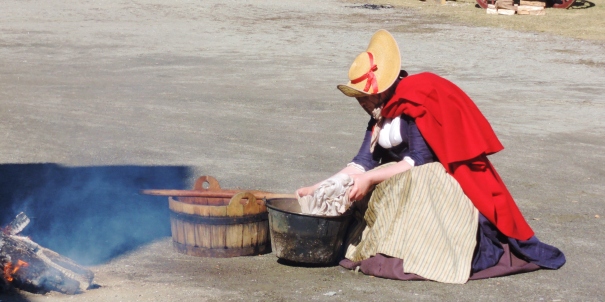
In the parade ground, soldier’s wives washed soiled linens. This task, a necessity for any army, is one we’re getting good at. Miss V. braved the chilly march weather and spent all day at the hard work of scrubbing.

Without any grass to lay linens out on, shirts and shifts were hung up inside the soldier’s barracks, were the mess of the noon-day meal is clearly evident, something which would likely be unacceptable in a proper Garrison.
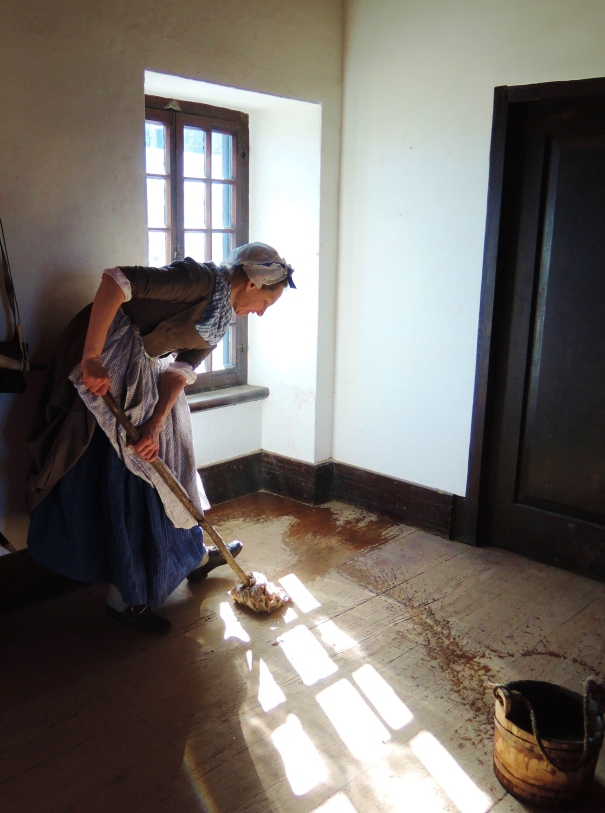
On this bright March day, cleaning seemed like an obvious activity. Kitty spent the morning sweeping and mopping the upstairs officer’s barracks. Three experimental mops were made for this purpose, based on the limited documentation available for such things. All were put to work, and were successful to varying degrees.
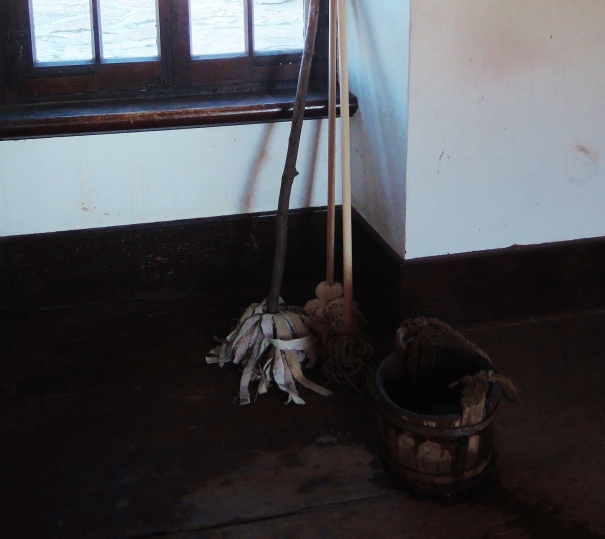
Beds too needed to be aired out and re-made.

“Domestic” spaces were completed with busy peg boards holding the clothing of all the fort’s inhabitants. Gowns and stays dressed the pegs, along with waistcoats and cocked hats.
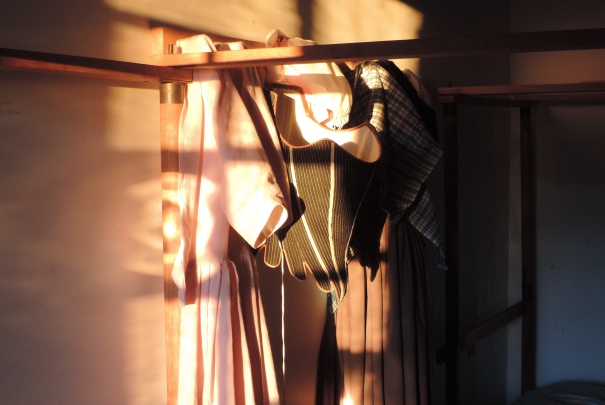
Outside in the parade ground again, soldiers did maintenance on the fort’s equipment, including re-painting a horse cart.
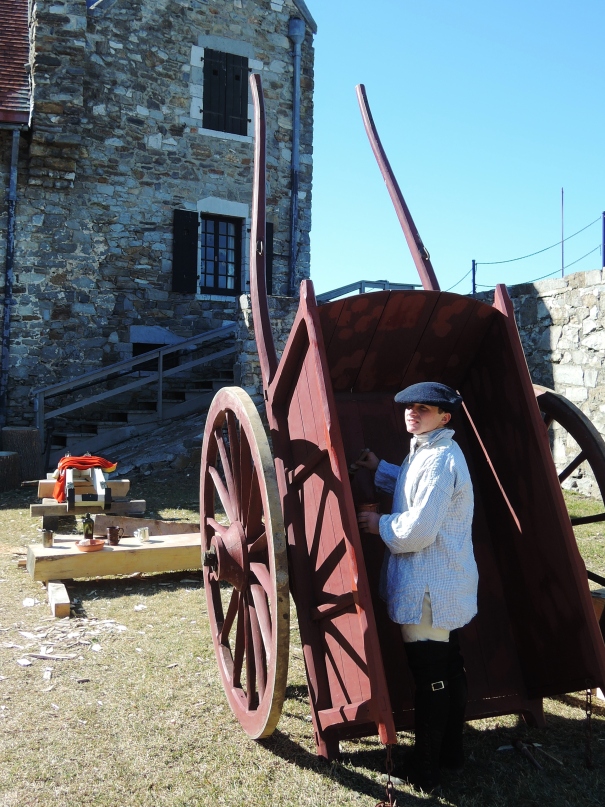
In the evening the company gathered together, enjoying the warmth and light of the barracks building’s small fireplace. One of the three grenadiers in the guard brought out a fiddle.
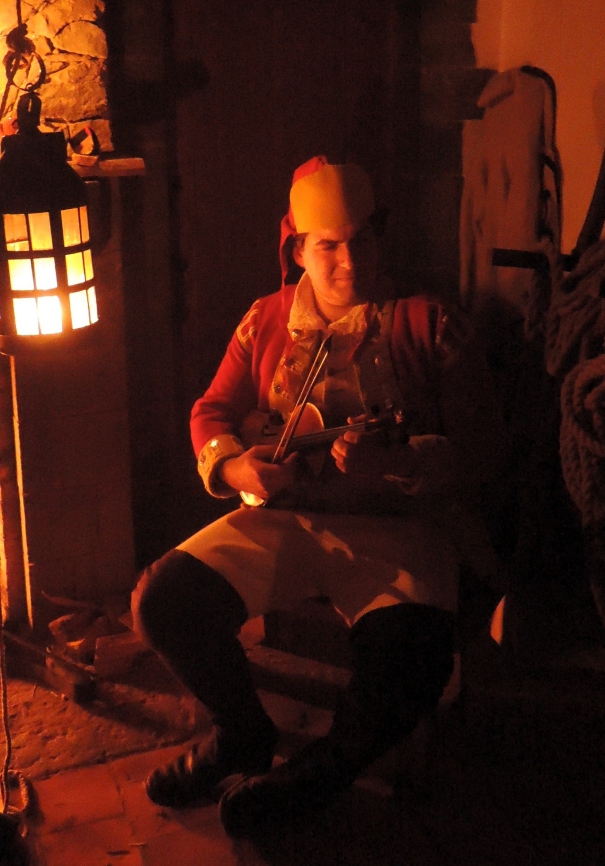
Even the sergeant relaxed, trading his hat and neck stock for a scotch bonnet (the 26th is, after all, a Scottish regiment) and printed cotton roller.
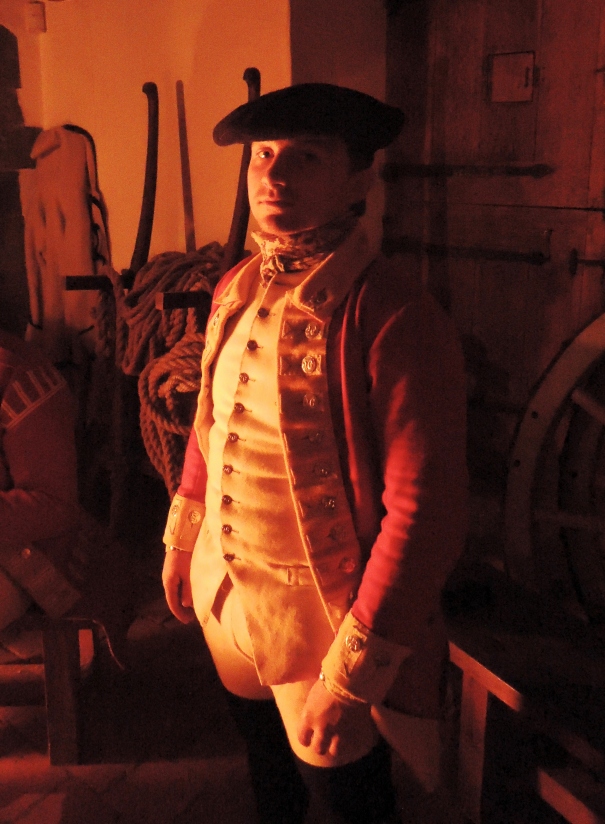
At the end of the day, we were tired from a job well done. Not only were the floors clean and the the cart newly-painted, we’d found a way to delve even deeper into the history of which we are the custodians, telling a fuller, richer, grittier story than ever.
We really enjoyed the photos, thank you! It does make a place come alive if people live there, even for a short while.
LikeLike
I am very interested in your “stories” can you please contact me. Thank you very much. Robin Barnes
LikeLike
Again Thank you so much for replying to my queries, I am looking forward to reading more. Your photos really help to get the points across. You have me very excited to take the next step.
LikeLike